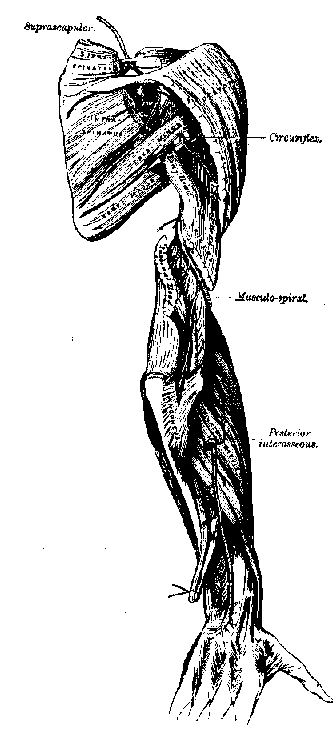Mr. Gray's Anatomy
Bodies, Books, Fortune, Fame
Ruth Richardson
(Oxford)

Everything you might want to know and might want not to know about Gray and Carter and their wives, their peculiarities, their jobs, their printers and their lives and deaths can be found here. Gray died early on, in 1861, three years after publication. Carter, despite spending years in India, lived to the ripe old age of sixty-five.
There are the usual heroes, and an unexpected near-villain: Henry Gray. He tried to take all the credit for the book, even, before the first printing, downplaying the importance of the illustrator. Gray, according to the writer, was not only a scene-stealer, but "austere, all-knowing and authoritative." For mere publicity value, he may even have selected a title that would have reminded readers of Thomas' Gray's earlier "Elegy Written in a Country Church-Yard."
Henry Gray --- the anatomical writer, not the poet --- is compared to Charles Dickens, "looking through walls, into locked cells, quiet bedrooms." He had the ability
- to cut where he likes, look where he likes, roll the body over, and excavate where he likes.
 How much life can be injected into a tome on dissection and histology? The author might be drumming up a conflict merely to give Gray's Anatomy more drama. There are few thrills in preparing a medical text, no matter how revolutionary. With all the fret-work (mid-nineteenth century bankrupts were sent Queen's Bench prison; the first edition of Gray's Anatomy weighed in at 3 lbs., 30 oz.), this is but a ho-hum study of mid-nineteenth century dissection techniques, and printers, illustrators, urban life and finance.
How much life can be injected into a tome on dissection and histology? The author might be drumming up a conflict merely to give Gray's Anatomy more drama. There are few thrills in preparing a medical text, no matter how revolutionary. With all the fret-work (mid-nineteenth century bankrupts were sent Queen's Bench prison; the first edition of Gray's Anatomy weighed in at 3 lbs., 30 oz.), this is but a ho-hum study of mid-nineteenth century dissection techniques, and printers, illustrators, urban life and finance.